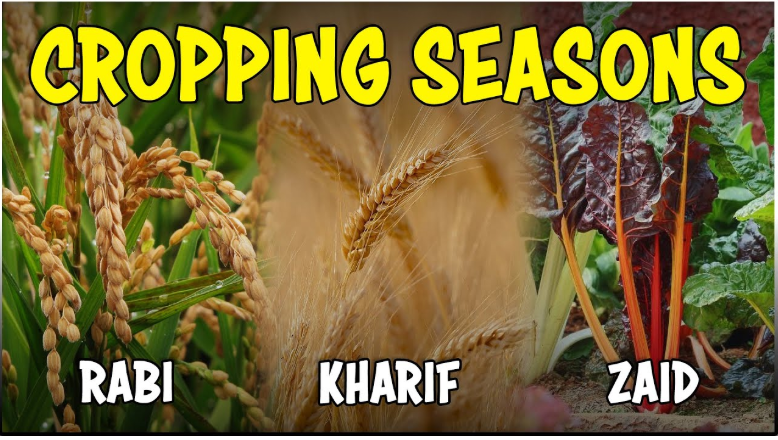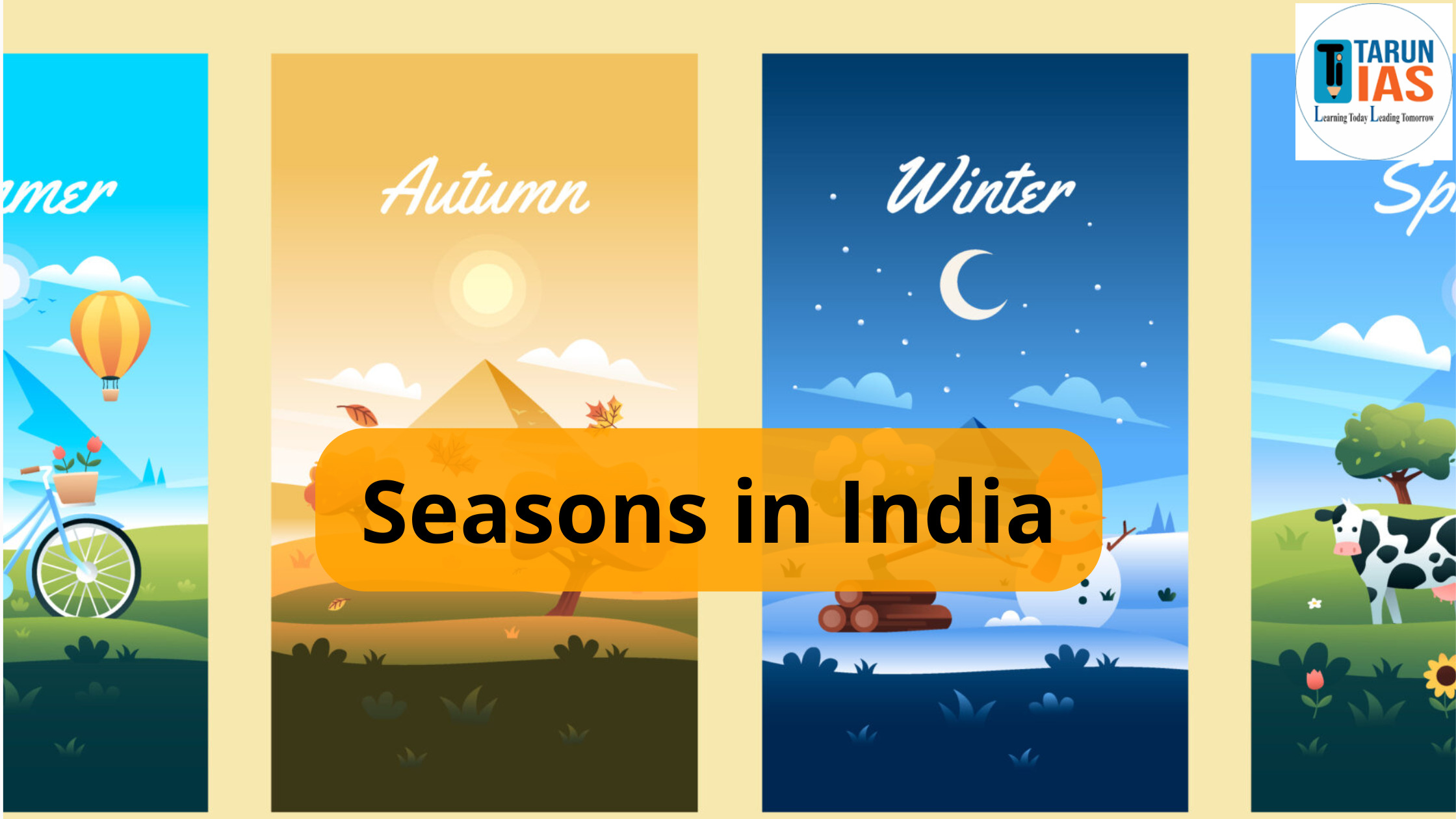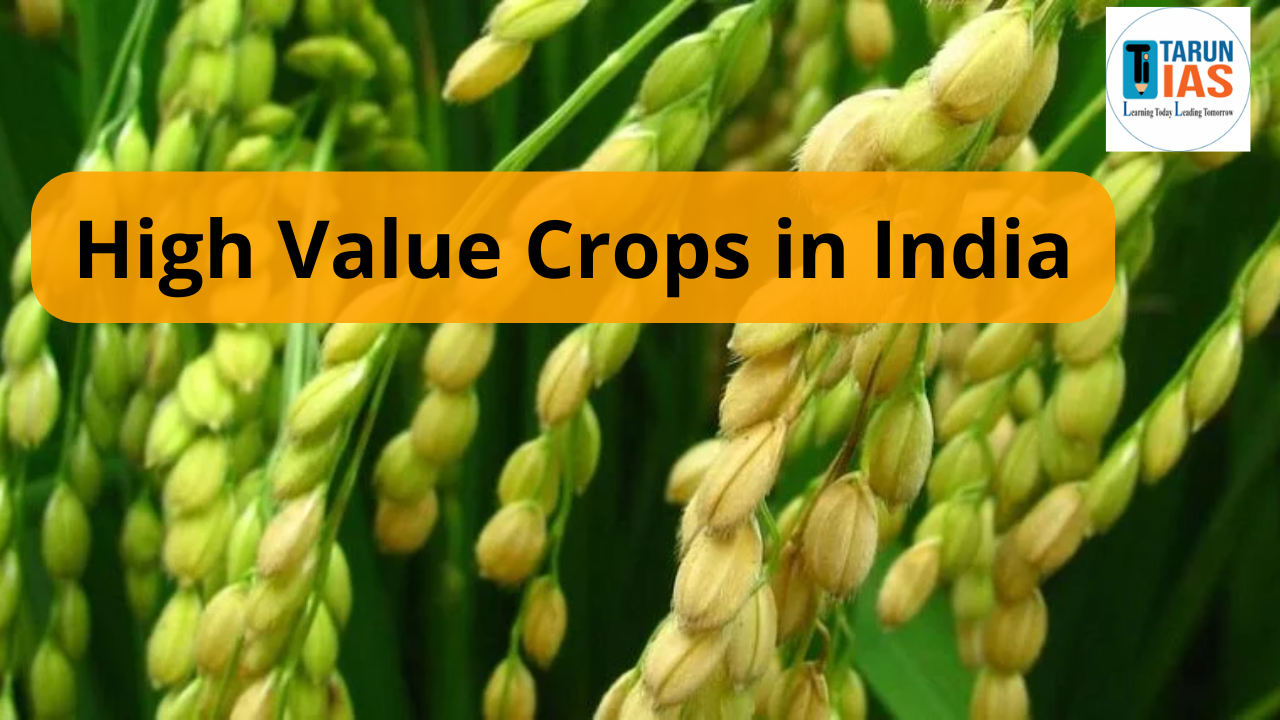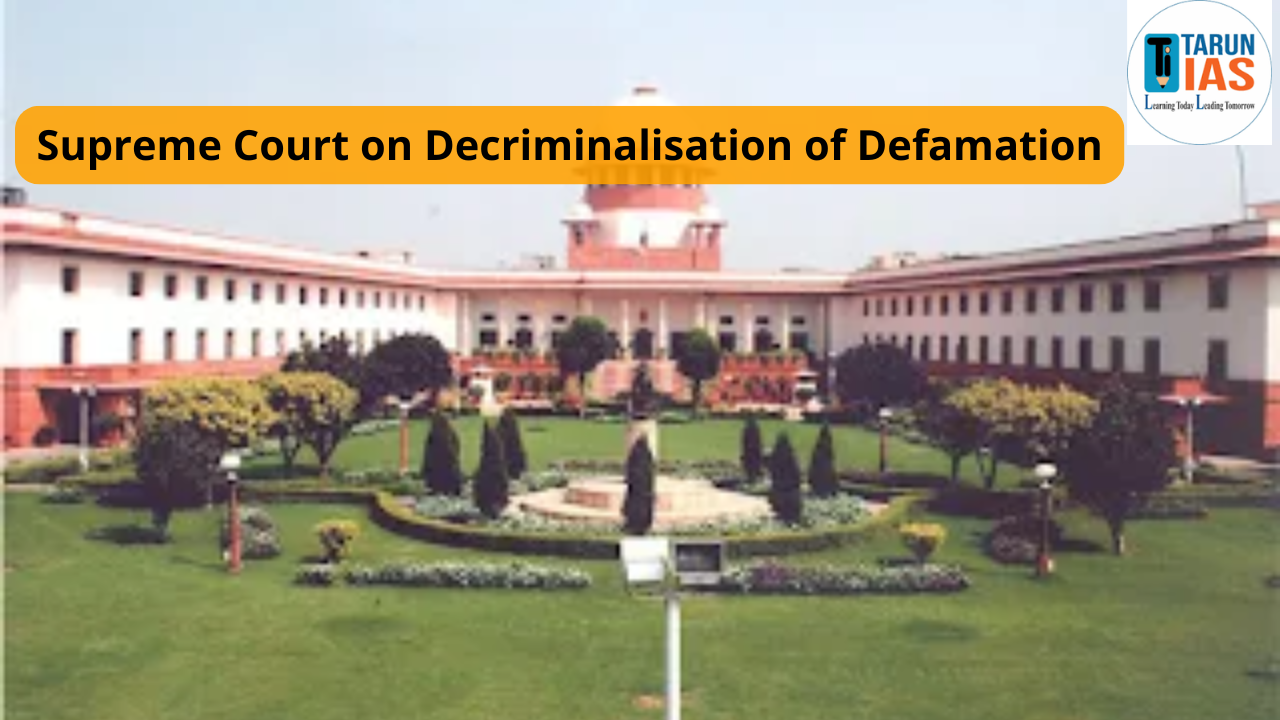India is the most diverse country in the world not only in terms of culture and geography but also due to its climatic conditions. There are different seasons in India due to its vast size and varying topography. The four main seasons are Summer, Monsoon, Winter, and Autumn. These seasons play an important role in shaping India’s agriculture, lifestyle, festivals, and economy. Understanding the different seasons in India is also essential for students, competitive exam aspirants, and anyone interested in the country’s natural and agricultural cycles.
Also Read: Khelo India Youth Games
Seasons in India
India has four main climatic seasons, as mentioned by the India Meteorological Department (IMD). These seasons are determined by monsoonal winds and the country’s geographical diversity. Each season in India brings different changes in temperature, precipitation, and weather patterns. The structured seasonal pattern has far-reaching effects on agriculture, water resources, festivals, and even regional lifestyles across the country. Here is a breakdown of the Seasons In India With Months and key features:
| Season | Typical Months | Highlights |
| Winter | December to early April | Winter season is marked by chilly temperatures, especially in northern and central regions. Snowfall occurs in the Himalayas. |
| Summer/Pre-Monsoon | April to June (extends to July in northwest India) | Summer season is characterized by rising temperatures, dry winds, and heatwaves. Mercury soars across plains and plateau regions. |
| Monsoon/Rainy Season | June to September | Rainy Season is dominated by the southwest monsoon, bringing widespread rainfall vital for agriculture. Coastal and central India see heavy downpours. |
| Post-Monsoon/Retreating Monsoon | October to December | A transitional phase with declining rainfall. Southern India, especially Tamil Nadu, receives some late-season showers. Northern regions experience ‘October heat.’ |
Also read: Biosphere Reserves in India 2025
Summer Season in India

The summer season in India is around April and reaches its peak in May and June, making them the hottest time of the year in most parts of the country. During this time, days grow longer, sunlight gets harsher, and temperatures rise up especially in the northern plains and central India, where temperatures often climb beyond 45°C, sometimes even touching 50°C in extreme conditions.
While inland areas face blazing heat and dry winds, regions along the coastline and hill stations enjoy comparatively milder weather due to their geographical features. The intense heat significantly affects the daily life of people, as they often avoid going outdoors during midday hours, and schools in many states are closed for summer vacations.
This season is also known for heatwaves, water shortage and frequent power cuts in several regions. However, the summer season plays an important role in agriculture by allowing farmers to prepare their fields for the upcoming Kharif season. This is also the time when seasonal fruits like mangoes, melons, and litchis arrive in abundance. With time, factors such as urbanization and climate change have made Indian summers more extreme in many cities like Delhi, Nagpur, and Churu, which often have record-breaking temperatures.
Also Read: Important Battles in Indian History
Monsoon Season in India

The monsoon season in India begins around June and continues till September, bringing a dramatic shift in the country’s weather. After the hot summer months, the arrival of the southwest monsoon winds brings much-needed relief and marks the beginning of heavy rainfall across most regions in India.
Rainy season starts from the southwestern coast, especially kerala, in early June and slowly moves across the rest of India. However, the monsoon time can be both helpful and harmful, as it also brings its own challenges, such as floods, waterlogging, and traffic problems in cities such as Mumbai, Guwahati, and Kolkata.
Monsoon season is very important for Indian agriculture, as it helps farmers grow Kharif crops like rice, maize, and pulses, which depend heavily on rainwater. Rural life becomes busy with farming activities as soon as the rains begin. But at the same time, too much or too little rain can be a problem. As heavy rainfall may damage crops or cause landslides, while less rain can lead to drought in some areas. Monsoon season often disrupts daily life also as transport delays, power cuts, and waterborne diseases increase.
Despite all these challenges, the monsoon season is one of the most important and eagerly awaited times of the year in India, as it supports farming, provides water for daily life, and helps us economically also.
Also read: Dams In India 2025
Winter Season in India

The winter season in India usually starts in December and lasts until February. This season is marked by cold weather, shorter days, and longer nights, especially in northern and central India. In north India on places such as Delhi, Punjab, and Uttar Pradesh can get very cold, with temperatures sometimes falling below 5°C. Hill areas such as Himachal Pradesh and Jammu & Kashmir often receive snowfall, which makes them popular tourist places to visit in winter.
While on the other hand, southern India and coastal areas remain mild and pleasant, with cooler mornings and evenings but not too cold during the day. Fog is common in the early mornings, especially in the north, which can affect transportation like trains and flights. People around the country wear warm clothes, drink hot beverages, and light bonfires to stay warm.
Winter season is also an important time for agriculture, as Rabi crops like wheat, mustard, and barley are grown during this season using the moisture left by the monsoon. Festivals like Lohri, Makar Sankranti, Pongal, and Christmas are celebrated during the winter season, making this season one of the most joyful seasons in many parts of the country.
Also Read: List of Mughal Emperors
Autumn Season in India

The Autumn season in India, also known as the Post-Monsoon season, falls between October and November. It is a transition period between the rainy monsoon season and the cold winter season. During this time, the heavy rains start to retreat, skies clear up, and the weather becomes more pleasant. In most parts of India, the temperature drops slightly, and the humidity reduces. However, in northern India, the month of October can still feel quite hot—this is often referred to as “October heat.” In southern India, especially in Tamil Nadu and parts of Andhra Pradesh, this season brings rainfall from the northeast monsoon.
Autumn season is also important for agriculture, as it helps farmers to harvest Kharif crops like rice and prepare fields for Rabi crops. Autumn is also a festive season in India with celebrations like Navratri, Dussehra, and Diwali, which bring joy and cultural vibrancy to many parts of the country.
Cropping Seasons in India

In a country like India, farming depends a lot on the seasons. Farmers grow different crops based on the rainfall, temperature, and weather conditions throughout the year. Below we have mentioned the three main cropping seasons in India: Rabi, Kharif, and Zaid. These Agricultural Seasons In India are very important for food supply and the economy. If there is too much or too little rain or if the climate suddenly changes, it can affect crop production and farmer incomes.
| Season | Sowing Time | Harvest Time | Main Crops | Common States | Climate Conditions |
| Rabi | October to December | April to June | Wheat, barley, mustard, gram, peas | Punjab, Haryana, Uttar Pradesh, Himachal Pradesh, Uttarakhand | Cool and dry weather; crops grown using stored soil moisture or irrigation |
| Kharif | June to July (with the arrival of monsoon) | September to October | Rice, maize, bajra, cotton, jute, groundnut, soybean, pulses | West Bengal, Odisha, Maharashtra, Andhra Pradesh, Assam, Tamil Nadu | Hot and humid; crops rely on monsoon rains |
| Zaid | March to July (between Rabi and Kharif) | — (short season crops) | Watermelon, cucumber, vegetables, fodder | Northern and northwestern states | Hot and dry; crops grown using irrigation |
Also Read: Major Rivers in India
Impact of Climate Change on Seasons in India
Climate change on seasons in India is causing noticeable changes as weather is becoming more unpredictable, and the seasons are no longer following their usual timelines. These all are affecting everything from our daily life to farming, water supply and health. Some key changes in seasons in India due to climate change are
- Shifts in Season Timings: Summers are starting earlier and lasting longer, whereas monsoons are arriving late in some regions and early in others. Winters are also becoming shorter and milder in many parts of India.
- Rising Temperatures: Overall temperatures are going up, leading to longer and more intense heatwaves in cities such as Delhi, Nagpur, and Ahmedabad, which often break temperature records.
- Irregular Rainfall: Monsoon rains are becoming uneven; some areas get too much rain, causing floods, while others face drought. Unseasonal rains are also damaging crops during the wrong time of year.
- Extreme Weather Events: India is facing more cyclones, floods, landslides, and droughts than before. All these events are affecting lives, property, and the economy.
- Impact on Agriculture: Farmers are finding it hard to plan their cropping seasons due to uncertain weather. Crop failures and reduced yields are becoming more common. While seasonal fruits and vegetables are also affected by changing temperatures.
Also Read: Ramsar sites in India
Seasons In India Upsc Notes
India has four main seasons according to the India Meteorological Department (IMD): Winter Season (Dec–Feb) is cold and dry, especially in North India with fog and snowfall in hilly areas. Summer (Mar–Jun) brings extreme heat, dry winds, and heatwaves, with temperatures rising above 45°C in some regions. The Monsoon season (Jun–Sep) is marked by the arrival of the southwest monsoon, bringing heavy rainfall that supports Kharif crops like rice, maize, and pulses. The Post-Monsoon/Autumn season (Oct–Nov) is a transition period with retreating rains, clear skies, and mild weather. South India receives some rainfall from the northeast monsoon during this time. India also follows three cropping seasons: Rabi (winter crops) are grown in October and harvested by March, Kharif (monsoon crops) are grown in June and harvested in autumn, and Zaid (summer crops) grown between March and July. Climate change is now causing irregular rainfall, longer summers, and shorter winters, which directly affects agriculture and weather patterns across the country.
Also Read: Tiger Reserves In India
Conclusion
Seasons in India play an important part in its geography, agriculture, and daily life. The cycle of winter, summer, monsoon, and post-monsoon shapes the way people live, travel, and grow food. Each season has its own importance, from the chill of winter to the rains of monsoon. However, climate change is now altering these natural patterns, which is leading to unpredictable weather, extreme events, and challenges for farmers. Understanding the seasons of India is not just useful for competitive exams such as UPSC but also essential for creating a more climate-resilient future.
Seasons In India FAQs
How many seasons are there in India?
There are four main seasons in India as per the India Meteorological Department (IMD): Winter, Summer, Monsoon, and Post-Monsoon (Autumn).
Which states receive rainfall during the retreating monsoon?
Tamil Nadu, parts of Andhra Pradesh, and southeast India receive rainfall during the retreating monsoon or northeast monsoon from October to November.
How is climate change affecting seasons in India?
Climate change in India is causing longer summers, shorter winters, irregular rainfall, and more extreme weather events like heatwaves, floods, and droughts in various regions.
Which season is best for tourism in India?
Winter (December to February) is considered the best season for tourism, as the weather is pleasant in most parts of the country.
What is the Zaid season in agriculture?
Zaid is a short agricultural season between Rabi and Kharif (March to July), where farmers grow some vegetables and fruits like watermelon and cucumber using the irrigation process.















